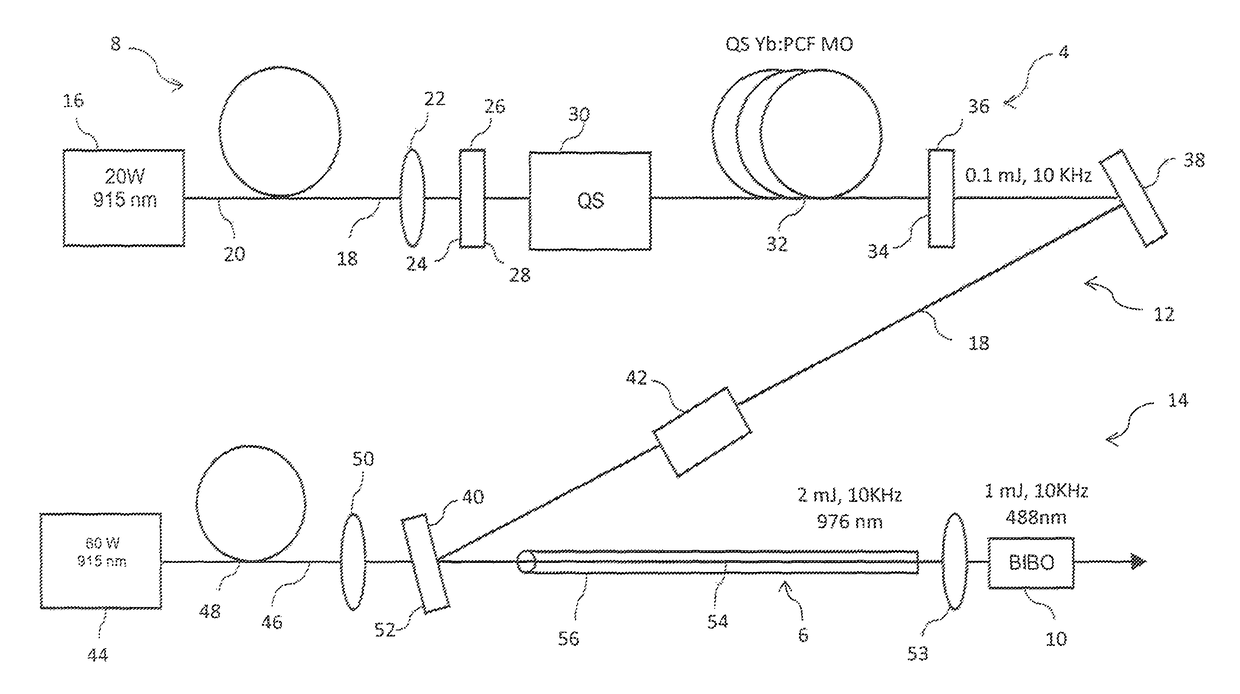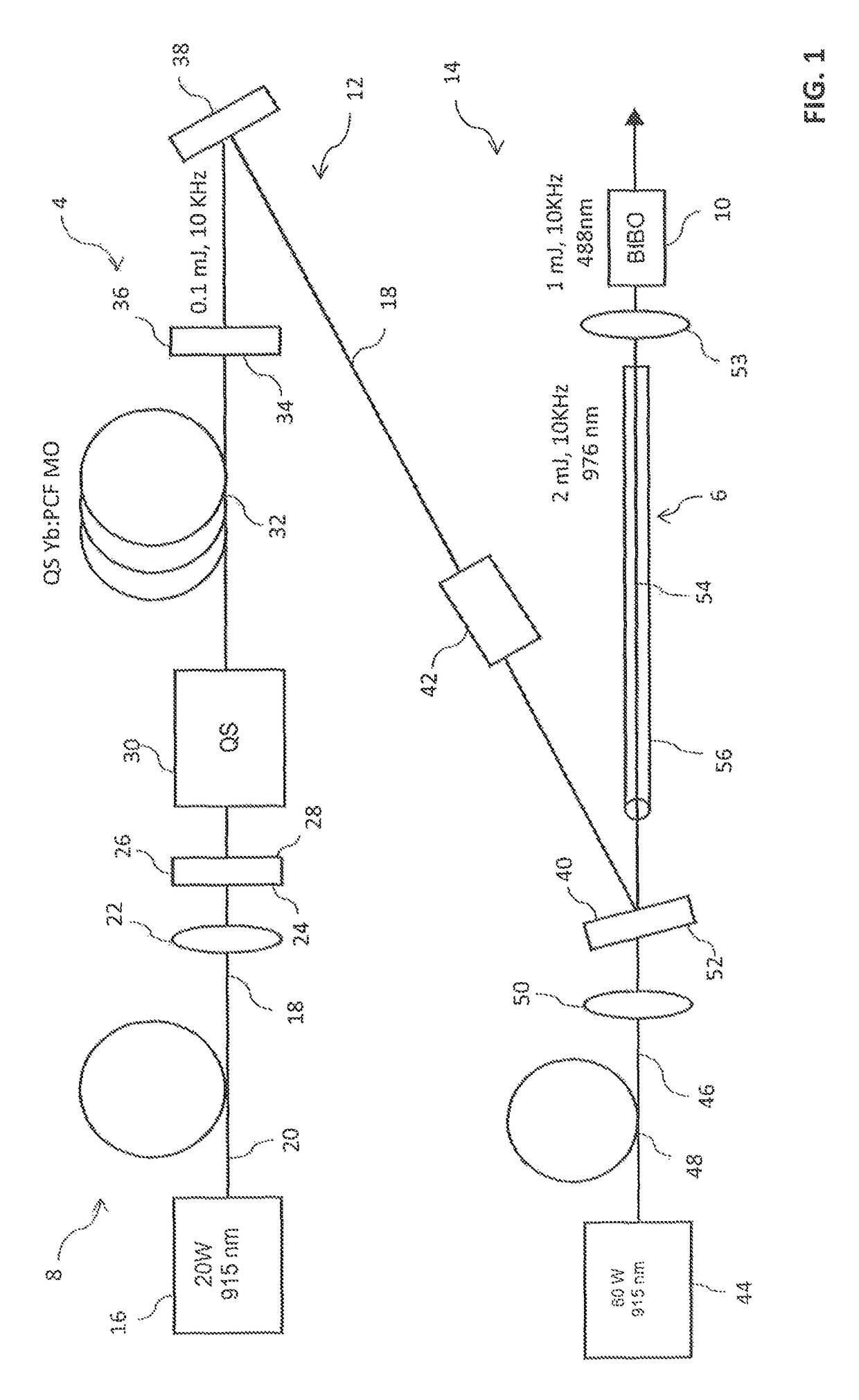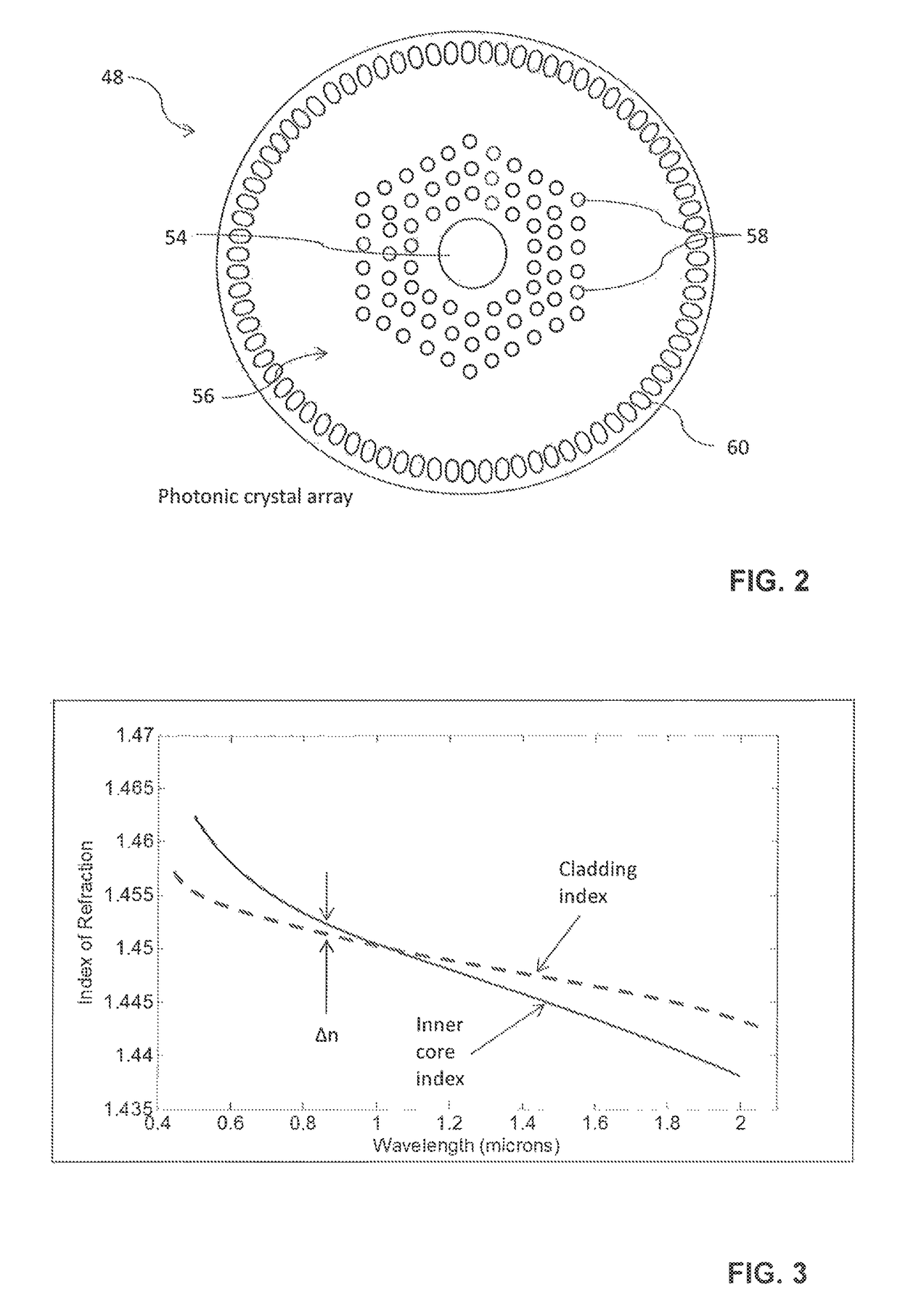Phosphate photonic crystal fiber and converter for efficient blue generation
a technology of phosphate photonic crystal fiber and converter, which is applied in the field of fiber lasers, can solve the problems of difficult power scaling in the 9xx nm (i.e., 900-999 nm) region, aperture restricting the fiber from bending, etc., and achieves short wavelength of operation, effective reduction of gain, and favorable gain characteristics
- Summary
- Abstract
- Description
- Claims
- Application Information
AI Technical Summary
Benefits of technology
Problems solved by technology
Method used
Image
Examples
second embodiment
[0042]Turning now to FIG. 4, the present invention will now be described. As this embodiment is very similar to the previously discussed embodiment, only the differences between this new embodiment and the previous embodiment will be discussed in detail while identical elements will be given identical reference numerals.
[0043]FIG. 4 shows a simplified embodiment of a phosphate photonic crystal fiber (PPCF) amplifier 6 with a single nonlinear converter 10 and generally includes a pump source 44, a seed source 18′ (supplied by a first source—not shown), the PPCF amplifier 6, and the nonlinear converter 10. According to this embodiment, the laser seed beam 18′, generated by the first source and having a wavelength of 975 nm, propagates toward and is reflected by a first surface 63 of a seed mirror 64 toward the amplifier 6.
[0044]The second (laser) pump source 44, according to this embodiment, pumps 900-950 nm light into the system 8. The second pump beam 46, from the pump source 44 and...
third embodiment
[0047]Turning now to FIG. 5, the present invention will now be described which is similar to the previously discussed embodiment. In FIG. 5, a simplified embodiment of a phosphate photonic crystal fiber (PPCF) laser oscillator 76, operating as a continuous wave (CW) with single nonlinear converter 10, is shown. According to this embodiment, the pump source 72 generates a laser first (laser) pump beam 74, having a wavelength of 900-950 nm, and propagates the first (laser) pump beam 74 toward a first end of a focusing lens assembly (typically comprising a plurality of lens) 61. A second opposite end of the focusing lens assembly 61 is aligned to propagate the first pump beam 74 toward a first surface 24 of the high reflector 26 which permits substantially all of supplied first pump beam 74 to pass therethrough and enter into the PPCF laser oscillator 76. An opposed second surface 28 of the high reflector 26, is coated with a coating which reflects substantially 100% of the 976 nm back...
PUM
 Login to View More
Login to View More Abstract
Description
Claims
Application Information
 Login to View More
Login to View More - R&D
- Intellectual Property
- Life Sciences
- Materials
- Tech Scout
- Unparalleled Data Quality
- Higher Quality Content
- 60% Fewer Hallucinations
Browse by: Latest US Patents, China's latest patents, Technical Efficacy Thesaurus, Application Domain, Technology Topic, Popular Technical Reports.
© 2025 PatSnap. All rights reserved.Legal|Privacy policy|Modern Slavery Act Transparency Statement|Sitemap|About US| Contact US: help@patsnap.com



